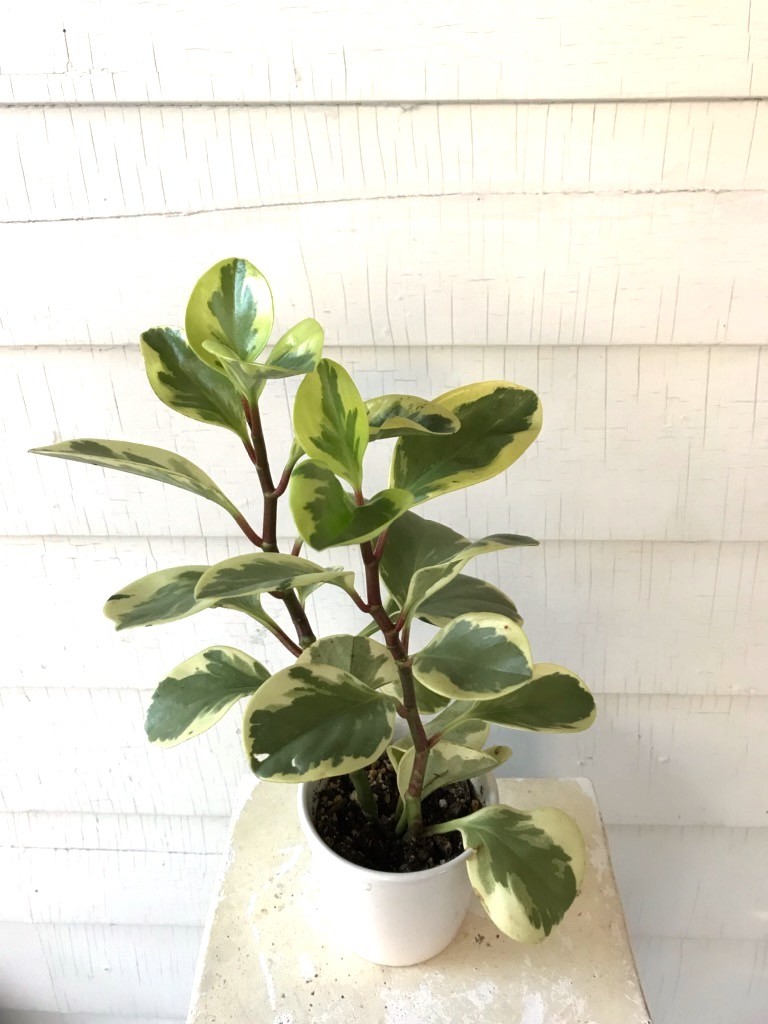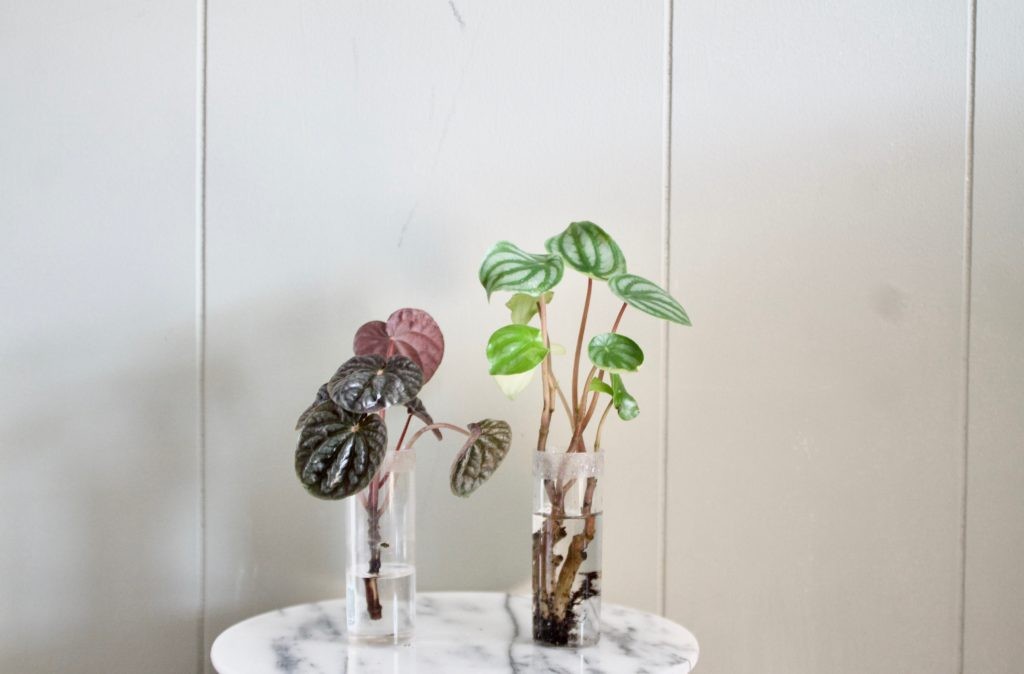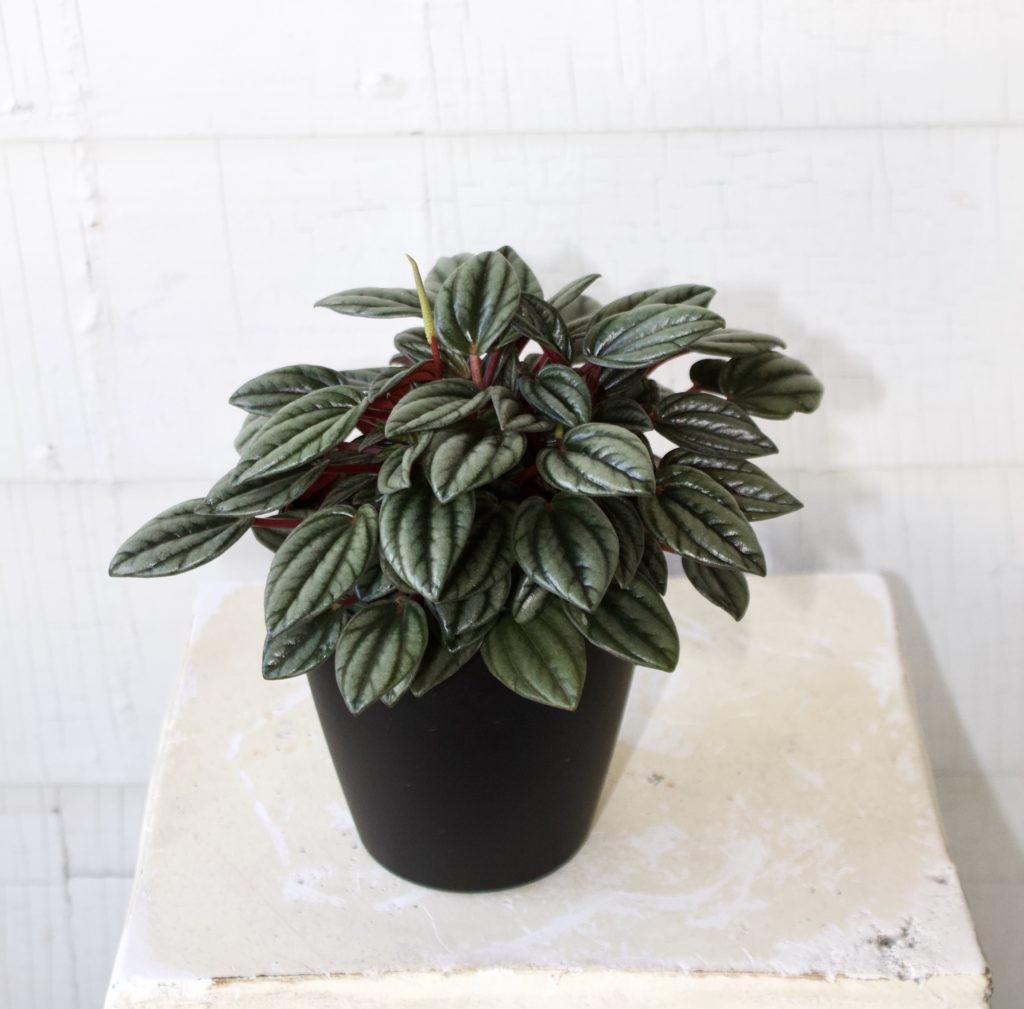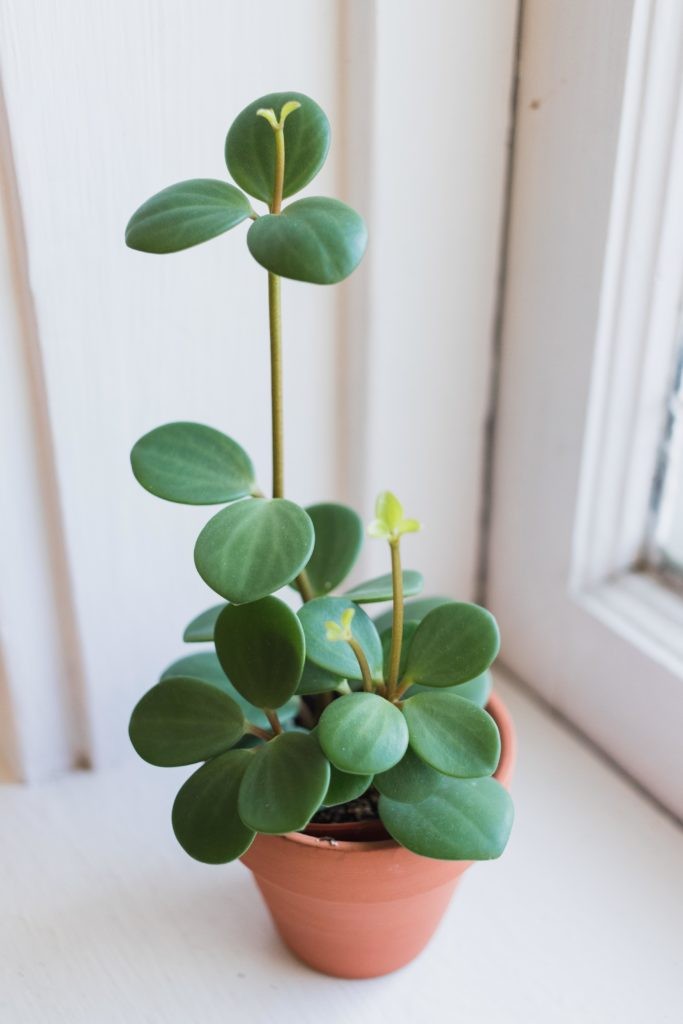Are All Peperomia Pet Safe? Absolutely! These charming plants are generally considered non-toxic, making them a delightful and safe addition to any home with furry friends. At PETS.EDU.VN, we want to help you create a pet-friendly environment with beautiful plants without worry. Learn about peperomia care and discover how to create a harmonious living space for you and your beloved pets.
1. Introduction to Peperomia: The Pet-Friendly Plant
Peperomias, also known as radiator plants or pepper elders, are popular houseplants cherished for their diverse foliage and easy-care nature. Originating from tropical and subtropical regions, these plants belong to the Piperaceae family, boasting a wide range of shapes, sizes, and colors. One of the most significant advantages of peperomias is their non-toxic nature, making them a safe and attractive choice for pet owners. With their charming appearance and air-purifying qualities, peperomias bring beauty and health to any home.
2. Why Peperomias Are a Great Choice for Pet Owners
Choosing pet-safe plants is essential for creating a harmonious and secure environment for your furry companions. Peperomias stand out as an excellent option for several reasons:
2.1. Non-Toxic Nature
According to the American Society for the Prevention of Cruelty to Animals (ASPCA), peperomias are non-toxic to both cats and dogs. This means that if your pet nibbles on the leaves, they won’t suffer from poisoning or severe health issues. This safety factor is crucial for pet owners who want to enjoy the beauty of indoor plants without constantly worrying about their pets’ well-being.
2.2. Variety and Aesthetics
Peperomias come in a wide array of shapes, sizes, and colors, offering something for every taste and home decor. From the popular Watermelon Peperomia with its striped leaves to the vibrant Red Ripple Peperomia, these plants add a touch of elegance and charm to any space.
2.3. Easy Care
Peperomias are known for their low-maintenance nature, making them perfect for both novice and experienced plant enthusiasts. They thrive in moderate light conditions and require minimal watering, making them a hassle-free addition to your home.
3. Common Peperomia Varieties and Their Safety Profiles
With so many varieties available, it’s helpful to know some of the most popular peperomias and their specific safety profiles:
| Variety | Scientific Name | Appearance | Safety for Pets |
|---|---|---|---|
| Watermelon Peperomia | Peperomia argyreia | Striped leaves resembling a watermelon | Non-toxic |
| Red Ripple Peperomia | Peperomia caperata | Textured, red-tinged leaves | Non-toxic |
| Baby Rubber Plant | Peperomia obtusifolia | Thick, glossy green leaves | Non-toxic |
| Metallic Peperomia | Peperomia rosso | Dark green leaves with red undersides | Non-toxic |
| Peperomia Hope | Peperomia rotundifolia | Trailing stems with round leaves | Non-toxic |
| Silverleaf Peperomia | Peperomia griseoargentea | Silver and green patterned leaves | Non-toxic |
| Variegated Peperomia | Peperomia obtusifolia | Green leaves with cream or white variegation | Non-toxic |
| Red-edge Rainbow Peperomia | Peperomia clusiifolia | Thick green leaves with red edges | Non-toxic |
| Jayde Peperomia | Peperomia polybotrya | Teardrop-shaped leaves | Non-toxic |
| Pink Lady Peperomia | Peperomia griseoargentea | Pink and green variegated leaves | Non-toxic |
| Pixie Peperomia | Peperomia orba | Small, rounded green leaves | Non-toxic |
| Felted Pepperface Peperomia | Peperomia incana | Soft, fuzzy leaves | Non-toxic |




All the above peperomia varieties are considered safe for pets, according to the ASPCA. However, it’s always a good idea to monitor your pets around any houseplants to prevent excessive consumption, which can lead to mild gastrointestinal upset.
4. Understanding Pet Safety and Houseplants
When it comes to pets and houseplants, understanding the potential risks is crucial. Many popular houseplants contain toxins that can be harmful to animals if ingested. Common symptoms of plant poisoning in pets include vomiting, diarrhea, drooling, lethargy, and loss of appetite. In severe cases, some plants can cause organ damage or even death.
4.1. Common Toxic Plants to Avoid
To protect your pets, it’s essential to avoid these common toxic plants:
- Lilies: Highly toxic to cats, causing kidney failure.
- Oleander: Contains cardiac glycosides that can cause heart problems.
- Sago Palm: Toxic to both cats and dogs, causing liver failure.
- Dieffenbachia (Dumb Cane): Contains calcium oxalate crystals that cause oral irritation and swelling.
- Philodendron: Similar to Dieffenbachia, causing oral irritation and digestive upset.
- Azalea and Rhododendron: Contain toxins that affect the heart and nervous system.
- English Ivy: Can cause vomiting, abdominal pain, and skin irritation.
4.2. Resources for Identifying Safe Plants
Several reliable resources can help you identify pet-safe plants:
- ASPCA Poison Control Center: Offers a comprehensive list of toxic and non-toxic plants.
- Pet Poison Helpline: Provides expert advice on plant poisoning in pets.
- Local Veterinarian: Can offer specific recommendations based on your pet’s health and history.
- PETS.EDU.VN: Offers detailed guides and information on pet-safe plants and pet care.
5. Caring for Peperomias: A Detailed Guide
Peperomias are relatively easy to care for, but understanding their specific needs will ensure they thrive in your home.
5.1. Light Requirements
Peperomias prefer bright, indirect light. Direct sunlight can scorch their leaves, so it’s best to place them near a window with a sheer curtain or in a room with filtered light. Insufficient light can lead to leggy growth and loss of color.
5.2. Watering
One of the most common mistakes in peperomia care is overwatering. These plants are semi-succulent and store water in their leaves, making them drought-tolerant. Allow the top inch of soil to dry out between waterings. During the winter months, reduce watering frequency. Use well-draining soil to prevent root rot.
5.3. Soil and Potting
Peperomias thrive in well-draining soil. A mix of potting soil, perlite, and peat moss works well. Choose a pot with drainage holes to prevent water from accumulating at the bottom. Repot your peperomia every one to two years, or when it becomes root-bound.
5.4. Temperature and Humidity
Peperomias prefer temperatures between 65°F and 75°F (18°C and 24°C). Avoid placing them near drafts or heating vents. While they can tolerate average humidity levels, they appreciate higher humidity. Increase humidity by placing a tray of water near the plant, using a humidifier, or grouping plants together.
5.5. Fertilizing
Feed your peperomia with a balanced liquid fertilizer diluted to half strength every two to four weeks during the growing season (spring and summer). Avoid fertilizing in the fall and winter when the plant’s growth slows down.
5.6. Pruning and Maintenance
Prune your peperomia to maintain its shape and remove any dead or yellowing leaves. Use clean, sharp scissors or pruning shears. Regular pruning encourages bushier growth. Wipe the leaves occasionally with a damp cloth to remove dust and keep them looking their best.
6. Common Problems and Solutions
While peperomias are generally resilient, they can encounter a few common problems:
| Problem | Symptoms | Solution |
|---|---|---|
| Root Rot | Yellowing leaves, mushy stems | Reduce watering, repot with fresh soil, ensure proper drainage |
| Leaf Drop | Sudden loss of leaves | Check for overwatering, underwatering, or temperature stress |
| Pests | Visible insects, sticky residue | Treat with insecticidal soap or neem oil |
| Scorched Leaves | Brown or crispy spots | Move to a location with less direct sunlight |
| Leggy Growth | Long, sparse stems | Provide more light, prune to encourage bushier growth |
| Fungal Spots | Dark spots on leaves | Improve air circulation, avoid wetting leaves during watering |
Addressing these problems promptly will keep your peperomia healthy and vibrant.
7. Propagating Peperomias: Expanding Your Collection
Peperomias are easy to propagate, allowing you to expand your collection and share these pet-safe plants with friends and family.
7.1. Leaf Cuttings
One of the easiest methods is propagating from leaf cuttings:
- Select a healthy leaf and cut it from the stem, leaving a small portion of the petiole (leaf stem) attached.
- Place the leaf cutting on top of moist potting mix or insert the petiole into the soil.
- Cover the cutting with a plastic bag or humidity dome to create a humid environment.
- Place the cutting in a warm, bright location, but out of direct sunlight.
- Keep the soil consistently moist.
- After a few weeks, roots will begin to form. Once the cutting has developed a strong root system, remove the plastic bag and care for it as you would a mature peperomia.
7.2. Stem Cuttings
Stem cuttings are another effective method:
- Choose a healthy stem and cut it below a node (the point where leaves emerge).
- Remove the lower leaves to expose the nodes.
- Place the stem cutting in water or directly into moist potting mix.
- If using water, change it every few days. Roots should form within a few weeks.
- Once the roots are about an inch long, plant the cutting in a pot with well-draining soil.
- If planting directly in soil, keep the soil consistently moist and provide a humid environment.
7.3. Division
Division is suitable for larger, more established peperomias:
- Carefully remove the plant from its pot.
- Gently separate the root ball into smaller sections, ensuring each section has healthy roots and foliage.
- Plant each section in its own pot with fresh potting mix.
- Water thoroughly and care for as usual.
8. Incorporating Peperomias into Your Home Decor
Peperomias can be a versatile addition to your home decor, bringing greenery and style to any room.
8.1. Placement Ideas
- Windowsills: Perfect for providing bright, indirect light.
- Shelves: Trailing varieties like Peperomia Hope look beautiful cascading down shelves.
- Hanging Baskets: Showcase the unique foliage and growth patterns.
- Desktops: Add a touch of nature to your workspace.
- Bathrooms: The humidity-loving peperomias thrive in bathrooms with adequate light.
8.2. Complementary Plants
Pair peperomias with other pet-safe plants to create a lush, green oasis:
- Spider Plant (Chlorophytum comosum): Easy to care for and air-purifying.
- Prayer Plant (Maranta leuconeura): Known for its beautiful foliage and unique leaf movements.
- African Violet (Saintpaulia): Adds a splash of color with its vibrant blooms.
- Cast Iron Plant (Aspidistra elatior): Extremely resilient and tolerant of neglect.
- Swedish Ivy (Plectranthus verticillatus): Fast-growing and easy to propagate.
8.3. Creative Displays
Get creative with your peperomia displays:
- Terrariums: Create a miniature ecosystem with peperomias and other small plants.
- Living Walls: Add vertical interest and purify the air with a wall of plants.
- DIY Planters: Personalize your plant displays with homemade planters.
- Group Plantings: Combine different varieties of peperomias in a single pot for a diverse and visually appealing arrangement.
9. Tips for Keeping Pets Away from Plants
Even though peperomias are non-toxic, it’s still a good idea to deter your pets from nibbling on them. Here are some effective strategies:
- Placement: Place plants in areas that are difficult for pets to access, such as high shelves or hanging baskets.
- Barriers: Use plant stands, decorative screens, or chicken wire to create physical barriers.
- Deterrents: Spray plants with a pet-safe bitter apple spray or citrus-scented spray.
- Training: Teach your pets to avoid plants through positive reinforcement.
- Provide Alternatives: Offer your pets their own safe plants, such as cat grass or catnip.
- Distraction: Keep your pets engaged with toys and activities to reduce their interest in plants.
- Aluminum Foil or Rocks: Place aluminum foil or decorative rocks around the base of the plant to deter digging.
10. Addressing Common Misconceptions About Pet-Safe Plants
There are several misconceptions about pet-safe plants that can lead to confusion and anxiety.
10.1. “Pet-Safe” Means Edible
Just because a plant is labeled “pet-safe” doesn’t mean it’s meant to be eaten. While non-toxic, consuming large quantities of any plant can still cause gastrointestinal upset.
10.2. All Varieties of a Genus Are Safe
Even within the same plant family, toxicity levels can vary. Always research the specific variety before bringing it into your home.
10.3. Natural Remedies Are Always Safe
Some natural remedies, such as essential oils, can be toxic to pets. Use caution when using these products around your plants.
10.4. Symptoms Always Appear Immediately
Symptoms of plant poisoning can sometimes be delayed. Monitor your pet closely if you suspect they have ingested a toxic plant.
11. The Benefits of Houseplants for Both Pets and Owners
Having houseplants offers numerous benefits for both pets and their owners:
- Improved Air Quality: Plants filter toxins from the air, creating a healthier environment.
- Reduced Stress: Studies show that being around plants can lower stress levels and improve mood.
- Increased Humidity: Plants release moisture into the air, which can alleviate dry skin and respiratory issues.
- Aesthetic Appeal: Plants add beauty and vibrancy to any space.
- Educational Opportunities: Caring for plants can be a rewarding and educational experience for both children and adults.
- Connection with Nature: Bringing the outdoors in can provide a sense of connection with nature, especially in urban environments.
12. Finding Reliable Information and Resources
When it comes to pet safety and houseplants, it’s crucial to rely on accurate and trustworthy information.
12.1. Trusted Websites and Organizations
- ASPCA (American Society for the Prevention of Cruelty to Animals): Offers a comprehensive list of toxic and non-toxic plants, as well as resources for pet care and safety. Website: www.aspca.org
- Pet Poison Helpline: Provides expert advice on plant poisoning and other pet emergencies. Website: www.petpoisonhelpline.com
- Veterinarian: Your local veterinarian can provide personalized recommendations and advice.
12.2. Books and Publications
- “The Complete Houseplant Survival Manual” by Barbara Pleasant: A comprehensive guide to caring for houseplants, including information on pet safety.
- “Houseplants for a Healthy Home” by Jon VanZile: Offers tips on choosing and caring for air-purifying plants that are safe for pets.
12.3. Local Nurseries and Experts
Consult with local nurseries and plant experts for personalized recommendations and advice on pet-safe plants. They can provide valuable insights based on your specific climate and growing conditions.
13. Creating a Safe and Beautiful Home Environment
By choosing pet-safe plants like peperomias, you can create a home environment that is both beautiful and safe for your furry companions. With a little knowledge and careful planning, you can enjoy the benefits of indoor plants without compromising your pet’s health and well-being.
Remember to always monitor your pets around plants and seek veterinary care if you suspect they have ingested a toxic substance.
At PETS.EDU.VN, we’re committed to providing you with the information and resources you need to create a happy, healthy, and harmonious home for you and your pets.
14. Real-Life Scenarios and Solutions
Let’s explore some real-life scenarios and solutions related to peperomias and pet safety:
Scenario 1:
- Problem: Your cat is constantly batting at your peperomia plants.
- Solution: Move the plants to a location that is out of your cat’s reach, such as a high shelf or hanging basket. Provide your cat with alternative toys and activities to keep them engaged.
Scenario 2:
- Problem: Your dog has nibbled on your peperomia leaves.
- Solution: Monitor your dog for any signs of gastrointestinal upset. Contact your veterinarian if you notice any concerning symptoms. Ensure your dog has access to plenty of fresh water.
Scenario 3:
- Problem: You’re not sure if a particular plant is safe for your pets.
- Solution: Consult the ASPCA’s list of toxic and non-toxic plants or contact the Pet Poison Helpline for expert advice. When in doubt, it’s always best to err on the side of caution.
Scenario 4:
- Problem: You want to add more greenery to your home but are concerned about pet safety.
- Solution: Choose pet-safe plants like peperomias, spider plants, and prayer plants. Research each plant thoroughly before bringing it into your home.
15. Expert Opinions and Studies
Expert opinions and scientific studies support the safety and benefits of peperomias as houseplants:
- ASPCA: The ASPCA has consistently listed peperomias as non-toxic to both cats and dogs.
- Veterinarians: Veterinarians often recommend peperomias as a safe and attractive option for pet owners.
- Botanical Studies: Botanical studies have confirmed that peperomias do not contain any known toxins that are harmful to pets.
16. Peperomia and Air Purification
While peperomias are not as powerful air purifiers as some other houseplants, they still contribute to improving indoor air quality. Plants absorb carbon dioxide and release oxygen through photosynthesis. They also filter out some common indoor pollutants, such as formaldehyde and benzene.
For optimal air purification, combine peperomias with other air-purifying plants like spider plants, snake plants, and peace lilies.
17. Seasonal Care Tips for Peperomias
Peperomia care can vary slightly depending on the season:
- Spring/Summer: Water more frequently, fertilize every two to four weeks, and provide bright, indirect light.
- Fall/Winter: Reduce watering frequency, avoid fertilizing, and protect from drafts and cold temperatures.
18. Choosing the Right Peperomia for Your Home
When choosing a peperomia for your home, consider the following factors:
- Light Availability: Select a variety that suits the amount of light you have available.
- Space: Choose a size that fits your space. Some peperomias are compact, while others can grow larger.
- Aesthetic Preferences: Pick a variety that complements your decor and personal style.
19. Ethical Considerations and Sustainable Practices
When purchasing plants, consider the ethical and environmental impact:
- Source: Buy from reputable nurseries that follow sustainable practices.
- Pesticides: Avoid plants that have been treated with harmful pesticides.
- Packaging: Choose plants that are packaged in eco-friendly materials.
- Local: Support local nurseries and growers whenever possible.
20. The Future of Pet-Safe Houseplants
As awareness of pet safety grows, the demand for pet-safe houseplants is likely to increase. Plant breeders are continually developing new and exciting varieties that are both beautiful and safe for pets.
At PETS.EDU.VN, we’re committed to staying at the forefront of this trend and providing you with the latest information and resources.
21. Conclusion: Enjoying Pet-Safe Greenery with Peperomias
In conclusion, peperomias are a fantastic choice for pet owners who want to enjoy the beauty of indoor plants without worrying about their pets’ safety. With their non-toxic nature, diverse foliage, and easy-care requirements, peperomias bring joy and health to any home.
Remember to always research plants thoroughly and monitor your pets around greenery. With a little knowledge and careful planning, you can create a safe and beautiful environment for both you and your beloved animals.
22. Call to Action
Ready to create a pet-friendly plant paradise? Visit PETS.EDU.VN for more expert advice, detailed guides, and exclusive deals on pet-safe plants. Learn how to choose the right plants, care for them properly, and keep your pets safe and happy.
For any questions or assistance, contact us at:
- Address: 789 Paw Lane, Petville, CA 91234, United States
- WhatsApp: +1 555-987-6543
- Website: PETS.EDU.VN
Let PETS.EDU.VN be your trusted partner in creating a harmonious and healthy home for you and your furry friends.
Frequently Asked Questions (FAQs)
- Are all peperomia varieties safe for pets?
Yes, most peperomia varieties are considered non-toxic to cats and dogs, according to the ASPCA. However, it’s always best to monitor your pets and prevent excessive consumption. - What happens if my pet eats a peperomia leaf?
While peperomias are non-toxic, consuming large quantities can cause mild gastrointestinal upset, such as vomiting or diarrhea. Contact your veterinarian if you notice any concerning symptoms. - How do I know if a plant is safe for my pets?
Consult the ASPCA’s list of toxic and non-toxic plants or contact the Pet Poison Helpline for expert advice. When in doubt, it’s always best to err on the side of caution. - Are there any plants that are absolutely safe for pets?
While peperomias are considered safe, no plant is entirely risk-free. Always monitor your pets around plants and prevent them from consuming large quantities. - Can I use essential oils to deter my pets from plants?
Some essential oils can be toxic to pets. Use caution when using these products around your plants. Consult your veterinarian for recommendations on pet-safe deterrents. - How do I create a pet-friendly garden?
Choose non-toxic plants, create barriers to protect plants, and provide your pets with their own safe spaces to explore. - What are some other pet-safe houseplants besides peperomias?
Other pet-safe options include spider plants, prayer plants, African violets, and cast iron plants. - How often should I water my peperomia?
Allow the top inch of soil to dry out between waterings. Overwatering can lead to root rot. - What kind of light do peperomias need?
Peperomias prefer bright, indirect light. Direct sunlight can scorch their leaves. - How do I propagate peperomias?
Peperomias can be propagated from leaf cuttings, stem cuttings, or division.
We hope this comprehensive guide has answered your questions about peperomias and pet safety. At pets.edu.vn, we’re here to help you create a thriving and harmonious home for you and your furry friends.